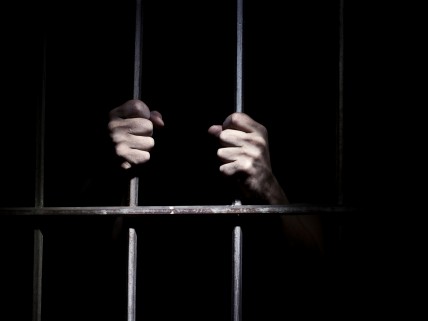Just beneath the surface of the social turmoil and unrest of today’s Black Lives Matter protests is the societal condition often referred to as “mass incarceration.” The stark individual incidents of police shootings—both by police and of police—understandably grab the headlines. But festering social problems at the complex intersection of the criminal justice system, poverty, and economic disadvantage deserve attention. Chief among these problems are (1) the disproportionate impact that high levels of imprisonment are having on African Americans and their communities, and (2) the nation’s violent crime rate (over recent decades).
Although the root causes of the rise in rates of incarceration are debated, there is no doubt about the unprecedented scale of the problem. The U.S. population behind bars is estimated to be 2.3 million, which is the highest incarceration rate in the world, and far higher than in most of the nation’s history. In 2008 more than one in three young African American men who had dropped out of high school were in prison. Sorting out the facts is not easy, because the U.S. correctional system has its federal, state, and local (including juvenile) layers, and because criminal justice statistics, such as on violent vs. nonviolent crime or arrests vs. convictions, not to mention varied sentencing rules, require close analysis. And attempts to connect criminal justice issues to economic data (not just inequality and poverty but also employment, opportunity, and mobility) or to family and community demographics or to views on race add further complexity.
Scholars point to policy reforms since 1980 as key to the development of the “mass incarceration” society. These reforms included mandatory minimum sentences, “three strikes and you’re out” laws, trying juveniles as adults, truth-in-sentencing policies, and other practices that rely on formal imprisonment. Locking criminals up became American society’s go-to response to crime, especially violent crime. The War on Drugs was a factor, though today only a small portion of people are in prison for drug offenses other than trafficking.
Related Links
- Mass Incarceration: The Whole Pie 2016
A wealth of data presenting the big picture of mass incarceration in the United States.
(Source: Prison Policy Initiative, March 14, 2016) - State Profiles
Use the interactive map to explore the facts about incarceration in your state.
(Source: Prison Policy Initiative; accessed August 15, 2016) - Incarceration and Social Inequality
This scholarly article argues that incarceration in the United States is both sizable and enduring because it is invisible to society at large, impacts most severely those already economically disadvantaged, and negatively affects the families and children of inmates.
(Source: Daedalus 139, no. 3 [Summer 2010]) - Racialized Mass Incarceration: Poverty, Prejudice, and Punishment
Chapter 12, by Lawrence D. Bobo and Victor Thompson, in Doing Race, edited by Hazel Rose Markus and Paula M. L. Moya, argues that mass incarceration cannot be understood apart from systematic antiblack racial prejudice.
(Source: scholar.harvard.edu; accessed August 15, 2016) - The Myth of Criminal-Justice Racism
Testimony before the U.S. Senate Judiciary Committee, October 19, 2015, by Heather Mac Donald, who counters misconceptions about pervasive racial bias in the U.S. criminal justice system.
(Source: City Journal, October 22, 2015)




